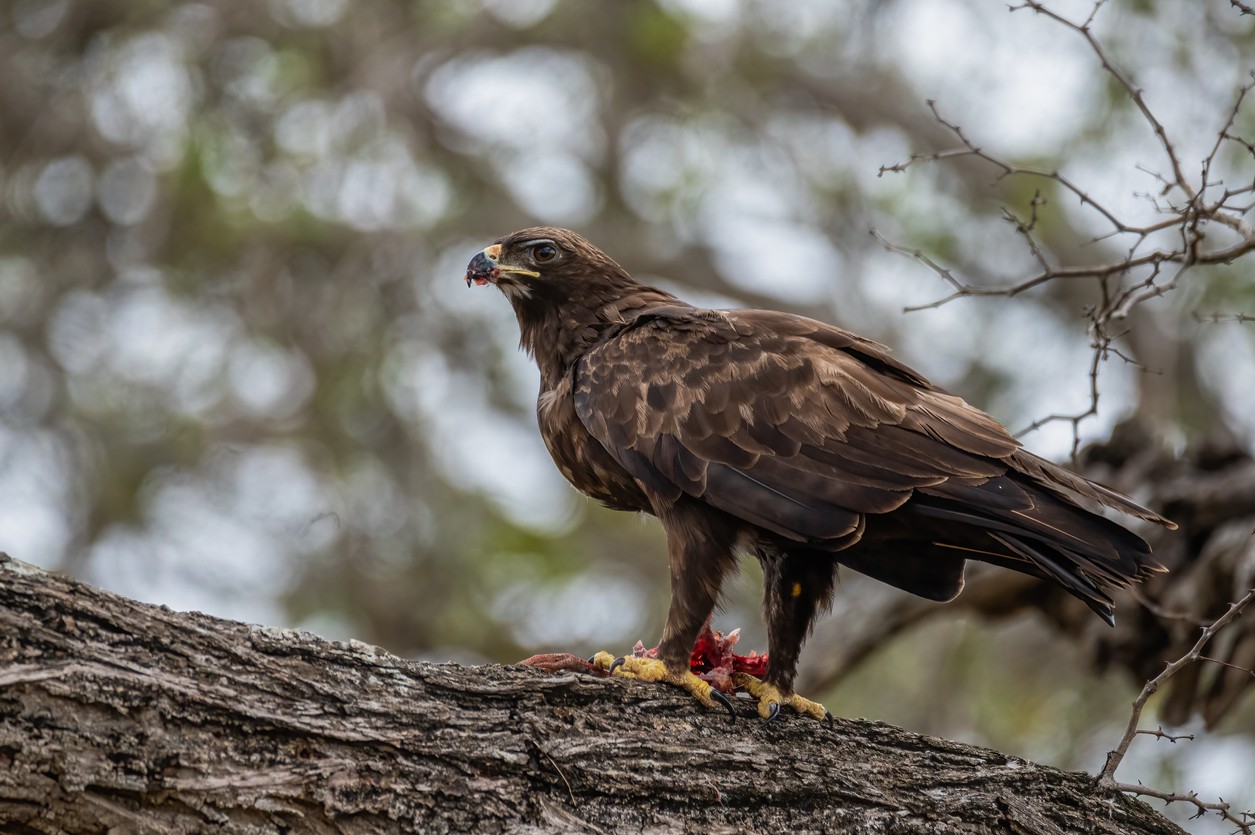Greater Spotted Eagle
A species of Greater True Eagles Scientific name : Clanga clanga Genus : Greater True Eagles
Greater Spotted Eagle, A species of Greater True Eagles
Botanical name: Clanga clanga
Genus: Greater True Eagles
Content
Description General Info

Description
The eagle is 59–71 cm (23–28 in) in length and has a wingspan of 157–179 cm (5.15–5.87 ft). Typical body mass is 1.6–2.5 kg (3.5–5.5 lb), with an occasional big female weighing up to 3.2 kg (7.1 lb). There is often a less obvious white patch on the upperwings, but a light crescent on the primary remiges is a good field mark. The white V mark on the rump is less clear-cut in adults than in the lesser spotted eagle (C. pomarina). The juvenile has white spots all over its wings and lacks a lighter nape patch. The call is a dog-like yip. 
Size
71 cm
Nest Placement
Tree
Feeding Habits
Greater Spotted Eagle predominantly preys on small mammals and occasionally birds, displaying a preference for terrestrial prey. Its hunting technique involves swooping down from a perch or soaring. Greater Spotted Eagle exhibits unique dietary adaptabilities, utilizing diverse habitats for foraging.
Dite type
Carnivorous
General Info
Feeding Habits
Bird food type
Behavior
In its winter range, the species is more social than when breeding. Small flocks of up to ten birds or so, of varying age, can be seen to patrol the land together. They also associate with other Accipitridae such as local and/or migrant black kites (Milvus migrans lineatus and govinda) or steppe eagles (A. nipalensis), distinctly smaller and larger raptors, respectively. 
Distribution Area
This is a species of wooded country. The population is entirely migratory. It breeds from northern Europe eastwards across Eurasia, and winters in south-eastern Europe, north-eastern Africa, the Middle East and the Indian Subcontinent. Migration to the breeding grounds takes place fairly late; in Bhutan, for example, birds can be seen with some regularity until the end of March. 
Species Status
It is classified as vulnerable to extinction by the IUCN. As of 2000, the world population of this eagle was estimated at less than 4,000 breeding pairs. The primary threats are habit degradation and habitat loss, as well as human disturbance during the mating season. 

